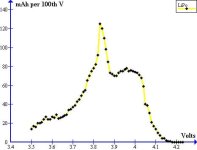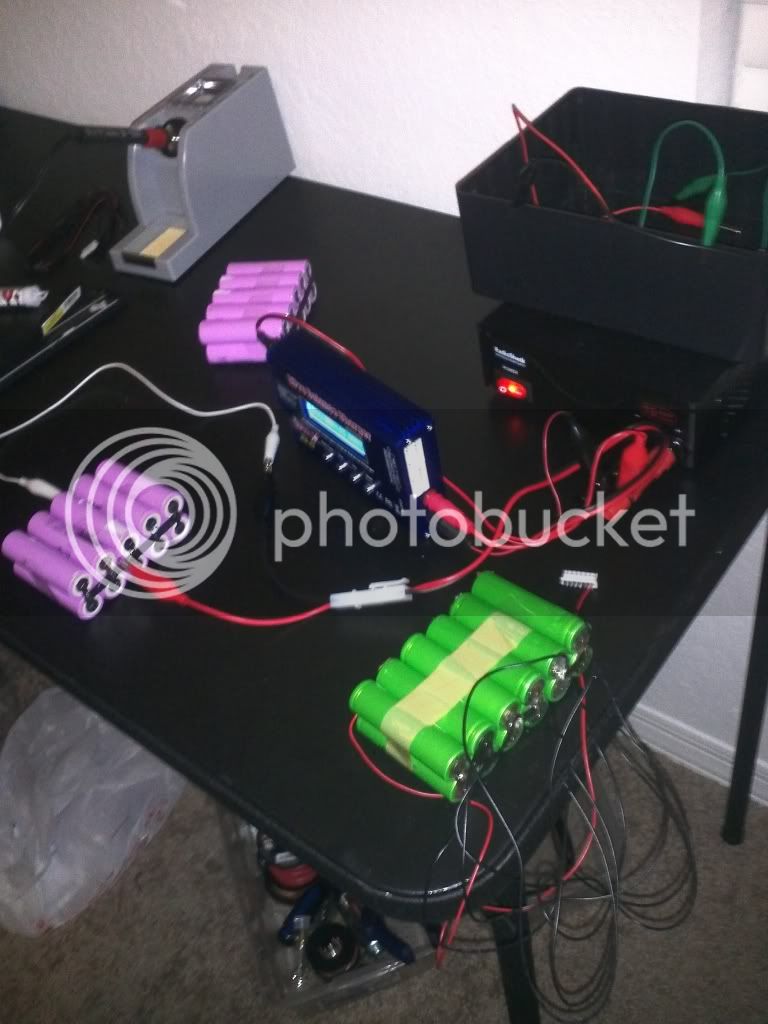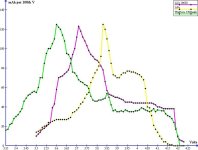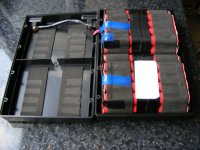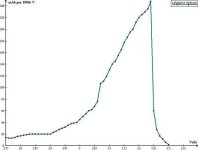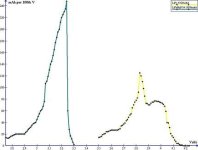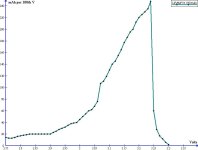DrkAngel said:
Latest mAh per 100th Volt test was with the rather common WinForce 5700mAh cell.
Yellow is the laptop recycled Lipo, that I use. - 4320mAh
Pink, is the laptop recycled 18650 cells that I use. - 5200mAh
Green, is the new, RC type, LiPo, that I was considering using. - 5700mah
I found it, almost, ... disturbing, that the best capacity, was at a point, below what is "usable", on an alternate brand of LiPo.
See the full specs & stats here -
Lithium - mAh/100th V - Discharge Test
Due to the extreme variance in usable voltages, I would highly recommend testing your own battery!
Capacity at different voltages differs substantially.
Different brands, supposedly of the same type-formulation, can vary wildly.
The LiPo, I use, are at "empty" voltage, before a different LiPo, starts into its greatest capacity voltage! ... ???
My testing procedure explained, up 2 posts.
Alternate test method is to ...
Plan a specific route, of limited length.
Check fully charged battery voltage.
Carefully measure and note voltage, after each "lap".
Run each lap in identical manner, same speed-acceleration, etc.
100th's Volt used each lap should give you a "map" of usable voltage.
End test, when 100ths volt used increases sharply.
Shorter "lap" will produce better "map".
Around block?
Recommended length varies by battery size.
Method should work with all "types" battery.
1/100ths Volt preferable!
Some digital meters won't meter 1/100 V at pack voltage.
1/10 V should give fair idea.
Laps per 10th volt, on full pack voltage.


